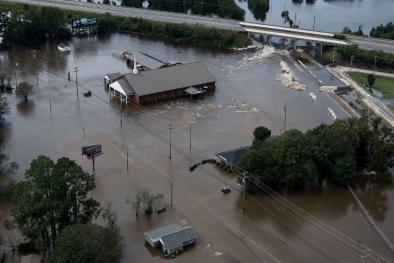Hurricane Florence caused up to $22 billion in damages. Climate change made the storm worse.

The floodwaters are finally starting to recede from Hurricane Florence, a storm that dumped upward of 35 inches of rain in places and more than 10 trillion gallons across North Carolina, South Carolina, and Virginia. The storm was a 1,000-year rain event, damaging thousands of structures, including toxic animal waste containment sites, which sent bacteria and hazardous chemicals into the water. At least 50 people died as a result of Florence and damages estimates run as high as $22 billion.
...
Several months after Hurricane Harvey, the massive storm that deluged Houston in 2017, researchers attributed 38 percent of the storm’s record rainfall to global warming. This year, with Hurricane Florence, we saw scientists trying to figure out the influence of climate change much faster, almost in real-time. And what they’ve found is this: Human activity vastly increased the amount of rain the storm produced and expanded the extent of its flooding. Here’s how.
Climate change strengthens the raw ingredients of a hurricane’s destruction
The first component of a hurricane is warm water. Hurricanes require sea surface temperatures of 27 degrees Celsius (82 degrees Fahrenheit) or higher to have enough energy to drive the storm. Regions with hotter waters can also cause existing hurricanes to intensify as they pass through.
Climate change has already pushed up ocean temperatures around the world and increased the length of seasons where waters are warm enough to sustain a hurricane. While it doesn’t necessarily change the frequency of hurricanes, it means that the storms that do form are likely to be more severe and last longer.
Related Content






